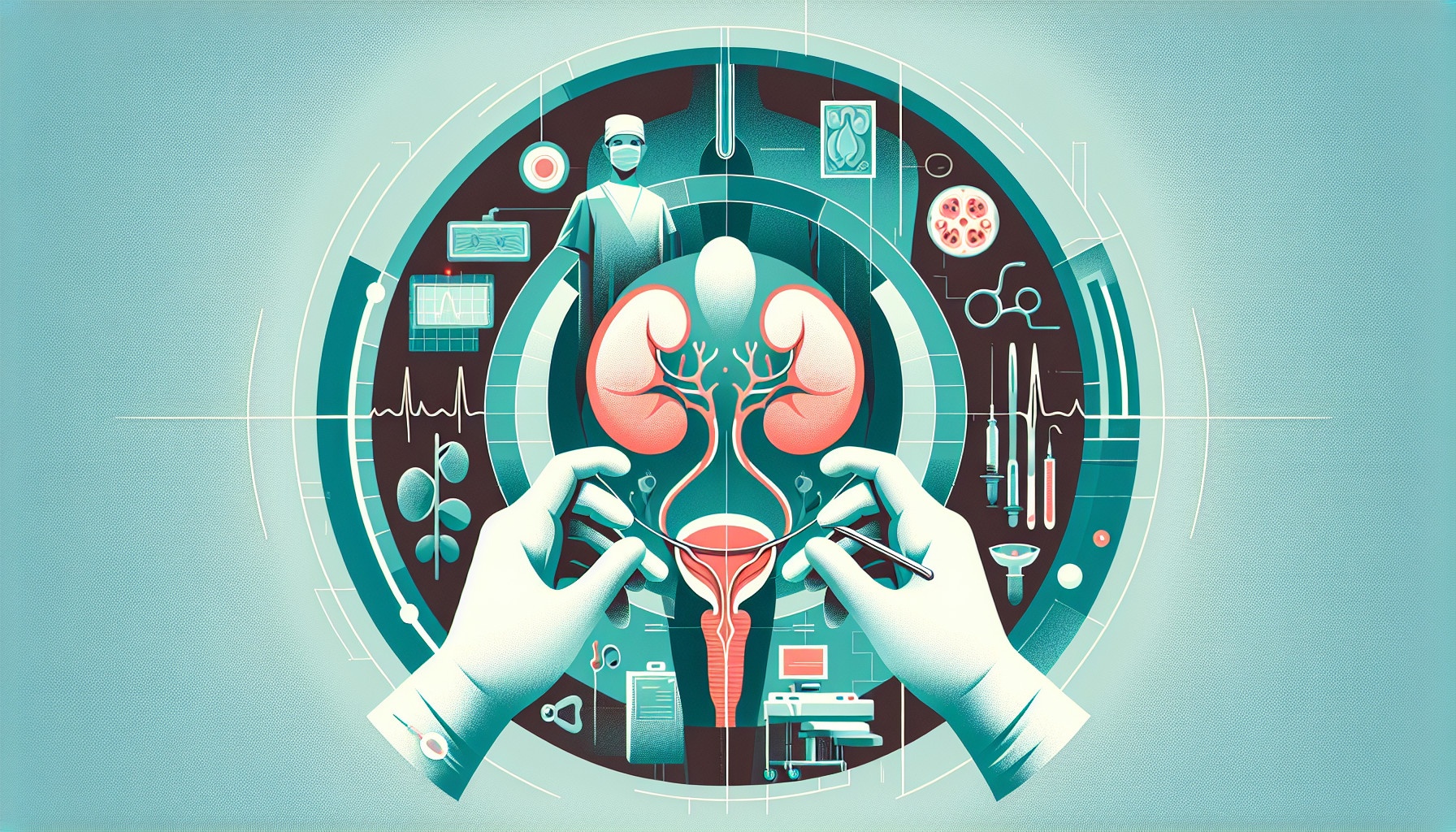Our Summary
This research paper discusses bladder augmentation, a set of surgical procedures designed to increase the size and flexibility of the urinary bladder. This is often done using sections of the intestines to expand the bladder. The paper highlights the importance of imaging (like x-rays or ultrasounds) in monitoring the bladder after surgery. Different types of bladder augmentation procedures show up differently in these images. One major complication that can occur after surgery is spontaneous bladder rupture, which can be fatal. This complication can occur shortly after surgery or much later, and it’s vital that radiologists can recognize it in imaging studies. The paper reviews why bladder augmentation is done in children, the surgical methods used, what the bladder looks like in images after surgery, and how imaging is used to identify complications like bladder rupture.
FAQs
- What is bladder augmentation and why is it done?
- What role does imaging play in the postoperative evaluation of bladder augmentation?
- What are some potential complications of bladder augmentation surgery?
Doctor’s Tip
One important tip a doctor might give to a patient undergoing bladder surgery is to follow all post-operative care instructions carefully, including taking prescribed medications, avoiding strenuous activities, and attending all follow-up appointments. It is also important to stay well-hydrated and maintain good bladder habits to promote healing and prevent complications. If any concerning symptoms such as severe pain, fever, or difficulty urinating occur, it is important to contact your healthcare provider immediately.
Suitable For
Patients who may be recommended for bladder surgery include those with bladder dysfunction or conditions such as neurogenic bladder, bladder outlet obstruction, interstitial cystitis, or bladder cancer. Additionally, patients with urinary incontinence, recurrent urinary tract infections, or bladder overactivity may also benefit from bladder augmentation surgery. Pediatric patients with congenital bladder abnormalities or spina bifida may also require bladder augmentation to improve bladder function. Overall, bladder surgery may be considered for patients with a variety of bladder-related issues that have not responded to conservative treatments.
Timeline
Before bladder surgery:
- Patient meets with a urologist to discuss the need for bladder augmentation
- Patient undergoes various tests and evaluations to determine the best surgical approach
- Patient receives pre-operative instructions and guidelines for surgery preparation
After bladder surgery:
- Patient stays in the hospital for a period of time to recover
- Patient may have a catheter in place to help drain urine from the bladder
- Patient is monitored for complications such as infection or bladder perforation
- Patient undergoes follow-up appointments with the urologist for post-operative care and monitoring
Overall, the timeline of a patient’s experience before and after bladder surgery involves thorough evaluation and preparation before the surgery, followed by close monitoring and care post-operatively to ensure a successful recovery.
What to Ask Your Doctor
- What specific type of bladder augmentation surgery will I be undergoing?
- What are the potential risks and complications associated with this type of surgery?
- What is the expected recovery time and post-operative care for this procedure?
- How will this surgery impact my bladder function and urinary habits?
- Will I need to undergo any additional imaging studies or tests after the surgery?
- How often will I need to follow up with you after the surgery?
- What symptoms should I watch out for that may indicate a complication or problem with the surgery?
- Are there any lifestyle changes or restrictions I should be aware of following the surgery?
- What is the long-term outlook for my bladder function and overall health after this surgery?
- Are there any alternative treatments or procedures that I should consider before proceeding with bladder augmentation surgery?
Reference
Authors: Breen M, Phelps A, Estrada C, Chow JS. Journal: Pediatr Radiol. 2015 Sep;45(10):1440-7. doi: 10.1007/s00247-015-3349-1. Epub 2015 Apr 24. PMID: 25903841
